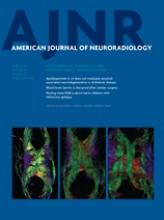The distinctive histopathologic hallmarks of Alzheimer disease (AD) are the neuritic plaques and the neurofibrillary tangles (NFT). Albeit described for the first time by Alois Alzheimer in 1907, the relationship of these histologic abnormalities to the pathogenesis of AD is still unclear.
An elevated CSF tau level is considered an in vivo marker of NFT, and a low CSF amyloid-β1–42 (Aβ1–42) level as a marker of Aβ plaque deposition in the brain of patients with AD.1 Aβ deposition is believed to initiate a process that subsequently leads to a loss of dendrites, synapses, and cells. However, Aβ plaques can also be detected in cognitively healthy elderly, their presence is only weakly associated with cognitive decline in both healthy individuals and patients with AD, and their removal does not prevent the occurrence of other neurodegenerative processes.1 These findings suggest that once the downstream process is triggered by Aβ deposition, other factors play a role in giving rise to the complete clinical/pathologic picture of AD.
In the article by Desikan et al published in this issue, the authors have investigated the interaction of CSF Aβ1–42, CSF phospho-tau (p-tau), and Apolipoprotein E ε4 (ApoE ε4; the current major genetic risk factor for AD) on the rate of tissue loss of the entorhinal cortex and other AD-vulnerable cortical regions in cognitively healthy elderly enrolled in the longitudinal Alzheimer Disease Neuroimaging Initiative (http://www.adni-info.org/Home.aspx). No effect of CSF Aβ1–42, p-tau, and ApoE ε4 were observed on the rate of cortical tissue loss, thus suggesting that none of the investigated biomarkers taken in isolation can provide an accurate account of the pathologic processes occurring in preclinical AD. Conversely, they have observed a significant interaction of CSF Aβ1–42 and CSF p-tau on cortical volume loss with time, as previously reported by the same group in both healthy individuals and patients with mild cognitive impairment.2 The novel piece of information is that though the presence of the ε4 allele correlates with CSF Aβ1–42 levels, there is no interaction between ApoE ε4 and CSF Aβ1–42 or p-tau on cortical tissue loss. This finding allowed the authors to conclude that ApoE ε4 may have a role in modulating preclinical AD pathology via Aβ-related mechanisms but that Aβ-associated neurodegenerative processes occur only in the presence of p-tau. This longitudinal study is important because its results improve our knowledge on AD pathophysiology, but it leaves open some questions on the pathologic mechanisms underlying this complex disease.
Concerning the temporal sequence of events, it is known that in the preclinical phase of AD, CSF Aβ correlates with structural brain abnormalities, while in mild AD, CSF tau, but not Aβ, is associated with the extent of brain atrophy.1 However, the role of tau in the preclinical stage of AD and its influence on cortical tissue loss are still controversial. In this context, a recent study failed to detect a relationship between levels of CSF tau and the extent of cortical volume loss in healthy individuals at risk of developing AD.3 On the other hand, these authors showed an association between CSF tau and white matter microstructural abnormalities (assessed by using diffusion tensor MR imaging) of regions adjacent to cortical areas known to be frequently affected by the disease.3 This suggests that injury to cerebral tissues other than the cortex should be considered when integrating AD biomarkers.3⇓–5
The ApoE ε4 allele has been found to correlate strongly with CSF Aβ levels in the preclinical phase of AD.6 On the other hand, in patients with overt cognitive decline such a relationship is weaker, leading to the hypothesis that in ε4 carriers, Aβ deposition may reach a plateau before the neurodegenerative aspects of the disease are fully expressed.6 What we know today is that ApoE ε4 likely predates the onset of Aβ deposition.6 However, ApoE ε4 may also act independently of the Aβ peptide through a dysregulation of tau phosphorylation, disruption of the cytoskeletal structure, and mitochondrial damage.7 As a consequence, future studies are warranted to clarify the different molecular mechanisms underlying the role of ApoE ε4 in preclinical stages of AD.
To conclude, the identification of AD biomarkers would represent an important step forward in the understanding of the pathophysiology of this condition. Recent multicenter and longitudinal studies are shedding light on the mechanisms and their interactions that then result in the clinical/pathologic picture of AD. These studies are making clear that the question “How is the team playing?” is more important than the one asking, “Who is playing first base?” and that the combination of MR imaging, CSF, and genetic data, describing in the best possible way the AD preclinical stages, is likely to contribute to the identification of a constellation of AD biomarkers, which may be useful for an early diagnosis, monitoring of disease progression, and assessing treatment efficacy once disease-modifying drugs become available.
References
- © 2013 by American Journal of Neuroradiology












